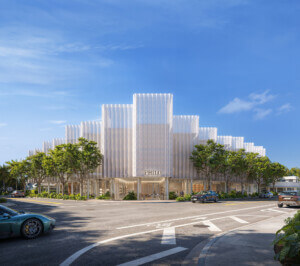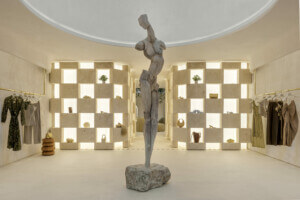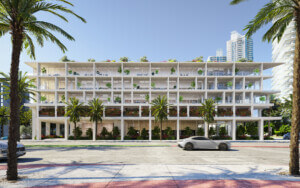This article appears in The Architect’s Newspaper’s April 2017 issue, which takes a deep dive into Florida to coincide with the upcoming AIA Conference on Architecture in Orlando (April 27 to 29). We’re publishing the issue online as the Conference approaches—click here to see the latest articles to be uploaded.
“Corals are the first architects on planet earth and the only organism besides humans to create things you can see from space,” said Colin Foord, marine biologist and cofounder of Coral Morphologic, a multimedia aquaculture studio and science lab out of Miami that is as focused on studying and growing corals as it is capturing and sharing their unique relationship to the city. “Miami has been submerged and emerged multiple times over recent and long-term geologic history,” explained Foord. “Coral keystone mined from the Florida Keys was used all over Miami—much of the city is made from marine calcium carbonate, some of which is the coral skeletons themselves. That is the baseline of our metaphors: the similarities between the city being like a coral reef and the coral reef being like a city. A reef is a 3-D ecosystem that is urban life on top of urban life; it’s fast and colorful and full of diversity.”
Coral Morphologic films the corals growing in its lab and then composes unique soundtracks for the videos to create mesmerizing artworks that are equal parts Planet Earth and Acid Test. The films are usually captured in a single shot using high resolution to capture the corals’ unique fluorescent qualities, and sped up to showcase the corals’ movements, which otherwise happen at a rate slower than humans want to watch.
In late February, Coral Morphologic teamed up with independent cinema nonprofit Borscht Corporation, music, arts, and technology festival III Points, and alternative band Animal Collective to create a site-specific performance at the Frank Gehry–designed New World Center in Miami Beach. Using multiple projectors, Foord and his cofounder, musician Jared McKay, screened their coral videos on all five of Gehry’s iconic sails while Animal Collective performed an hour of new music inspired by the reefs. According to Foord, the New World Center has one of the most advanced audio-visual systems in North America and the massive, swooping sails—the largest is 7,000 square feet—lend themselves well to the immersive experience. There are plans to adapt the performance to a planetarium setting in order to bring it to more audiences in the future.
This is the second performance on which Coral Morphologic, Animal Collective, and Borscht Corporation have collaborated: In 2012 they presented a film on the outside of the New World Center. Previously, Coral Morphologic has projected its coral videos on architecture around Miami and created a large-scale installation in 2009 at Miami’s
Art Basel. “By projecting corals onto cement and limestone walls, we are sort of referencing the geologic path,” says Foord. “All of the city was once under water, so it’s a very pertinent reminder that the coastline is not a static thing. We are essentially creating artificial reefs because, when the sea level rises and the buildings go under water, the corals will recolonize the cement—essentially, the bones of their ancestors—and they will inherit the city.”
Foord and McKay believe that humans have much to learn from corals, from their slow timescale (there are corals alive in Florida that predate Columbus’s arrival to the New World) to their adaptability. For example, corals now inhabit Biscayne Bay, a formerly brackish, mostly freshwater site turned saltwater bay, and have even glommed onto manmade infrastructure, including highways and artificial islands. They have survived numerous climate shifts, an impressive feat considering that corals are cemented in place and cannot leave if an environment becomes uninhabitable. According to Ford, “Miami has sort of inadvertently become a coral laboratory funded by taxpayers, and if we can begin to understand how coral can adapt and respond to this environmental upheaval then perhaps Miami can be a glimmer of hope in adapting to these changing environmental conditions.”










